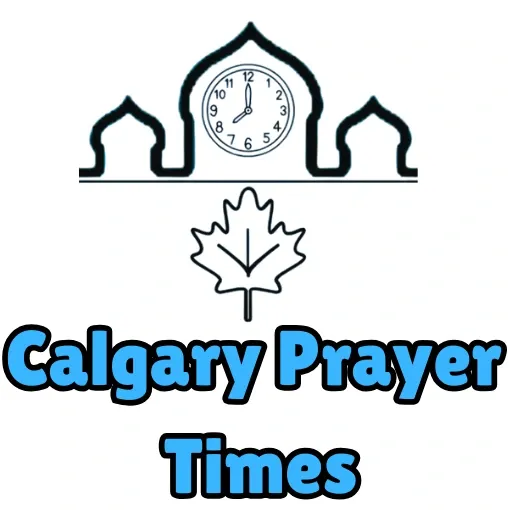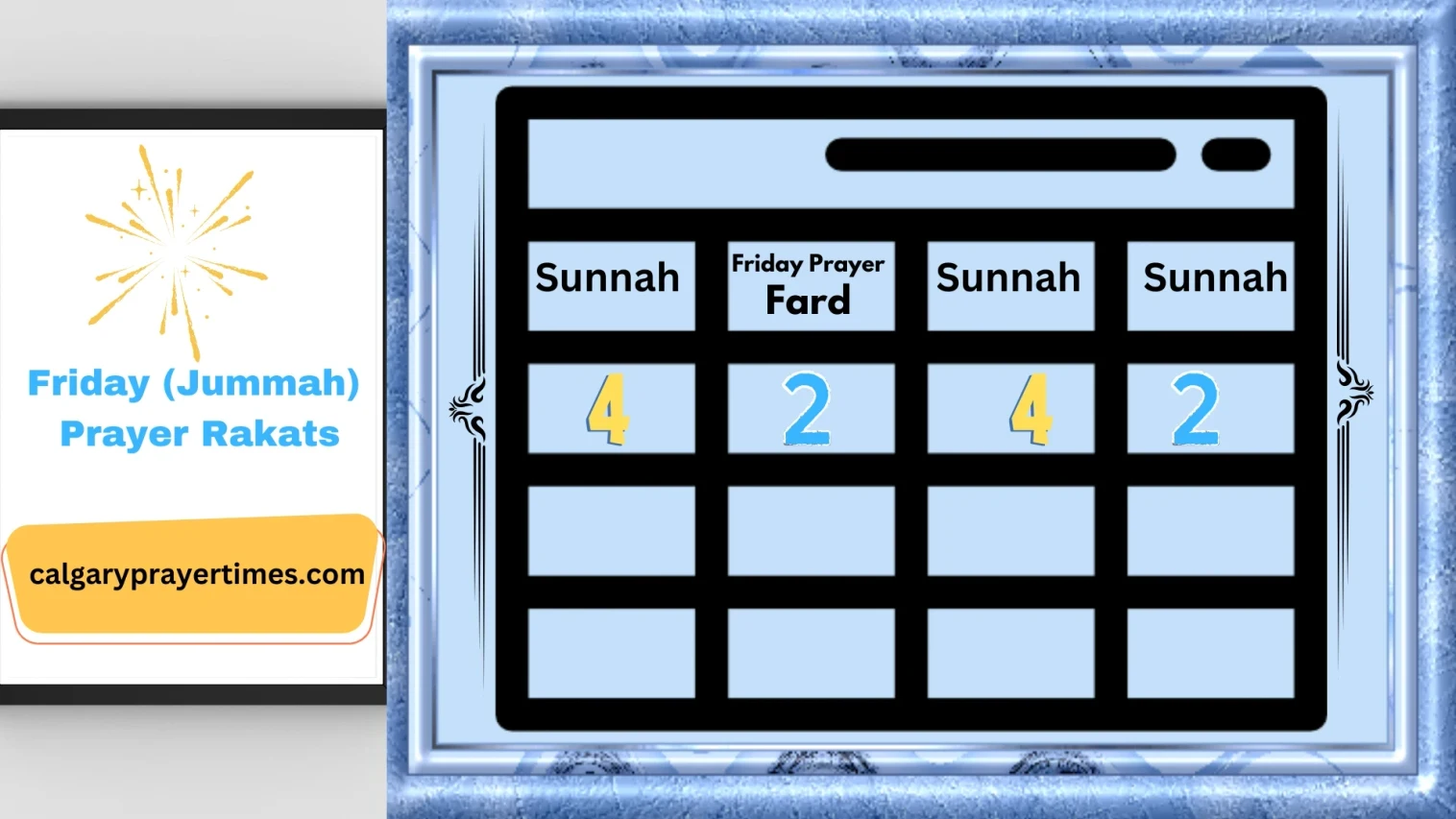A Comprehensive Guideline to Friday Jummah Rakats
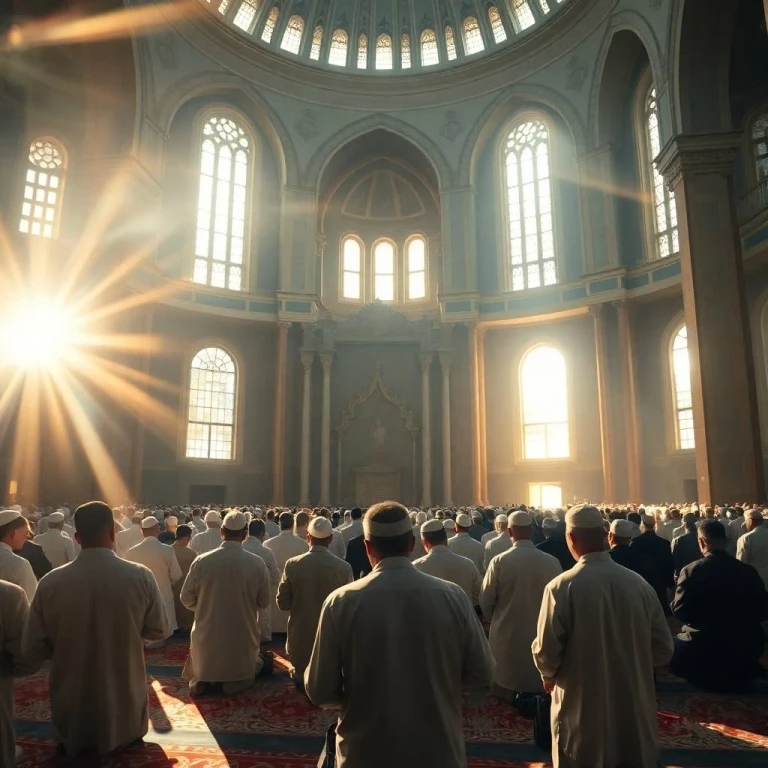
A Comprehensive Guideline to Friday Jummah Rakats because Friday holds a special place in the hearts of Muslims worldwide. Known as “Jummah” in Arabic, it is a day of congregational worship, reflection, and community bonding. Central to this day is the Friday prayer, or Salat al-Jummah, which replaces the regular Dhuhr prayer and comes with its set of rituals and rakats (units of prayer). For those new to Islam or seeking clarity, understanding the structure of Jummah rakats can feel overwhelming at first. This comprehensive guide breaks down the Friday prayer rakats, their significance, and how they are performed, step-by-step.
What is Friday (Jummah) Prayer?
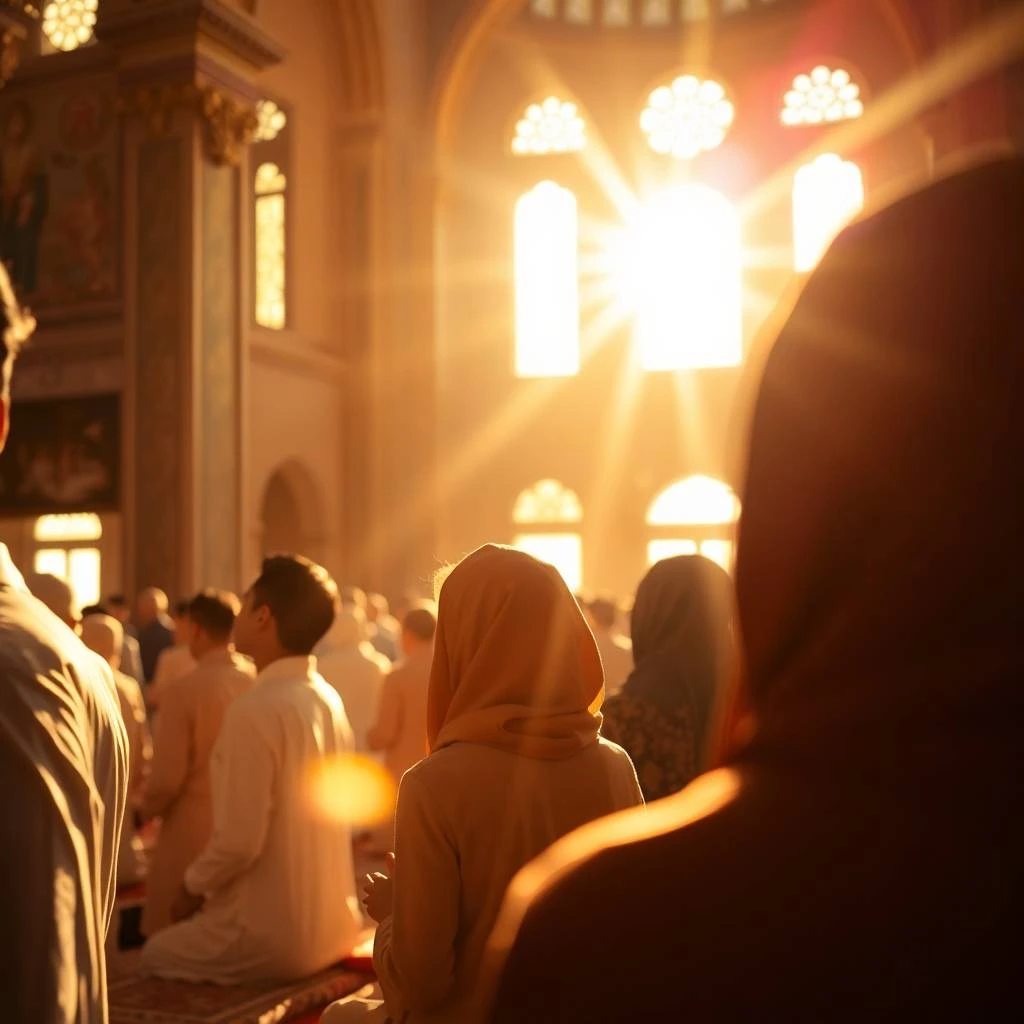
Jummah prayer is an obligatory congregational prayer for Muslim men, strongly encouraged for women (though they may pray at home), performed every Friday afternoon in place of the usual Dhuhr prayer. It is a time when Muslims gather in mosques to listen to a sermon (khutbah) delivered by an imam, followed by a two-rakat prayer. The importance of Jummah is highlighted in the Quran, where Allah says:
“O you who have believed, when the call is made for prayer on the day of Jummah, then proceed to the remembrance of Allah and leave trade. That is better for you, if you only knew.” (Surah Al-Jumu’ah, 62:9)
This verse underscores the spiritual and communal significance of Friday prayer, making it a cornerstone of weekly worship.
Order of Friday Prayer Rakats
Unlike the daily Dhuhr prayer, which consists of four rakats, Jummah prayer is shorter but involves additional components like the sermon. The total number of rakats associated with Friday prayer can vary depending on the sunnah (optional) prayers performed before and after the obligatory Jummah prayer. Here’s a detailed breakdown:
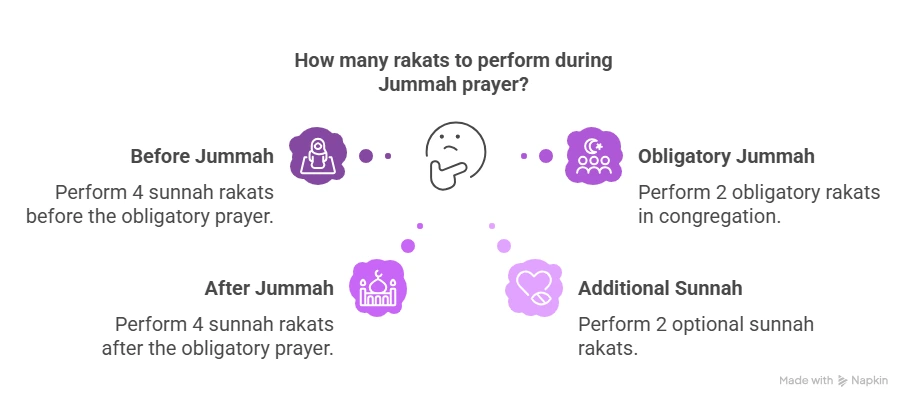
Stepwise Review of Jummah Rakats
1. Sunnah Mu’akkadah Before Jummah (4 Rakats)
Before the imam begins the khutbah, it is highly recommended to pray four rakats of sunnah prayer. These are performed individually in sets of two rakats each (two separate prayers of two rakats). The Prophet Muhammad (peace be upon him) consistently performed these prayers, making them sunnah mu’akkadah (strongly emphasized). They prepare the heart and mind for the congregational prayer and sermon ahead.
- How to Perform: Follow the standard method of praying two rakats, reciting Surah Al-Fatiha and another short surah in each rakat. After completing the first two rakats, repeat the process for the second set.
2. Obligatory Jummah Prayer (2 Rakats)
The core of Friday prayer is the two-rakat congregational prayer led by the imam. This replaces the four-rakat Dhuhr prayer on Fridays and is only valid when performed in a group with a sermon beforehand.
- Procedure:
- The imam delivers two sermons (khutbah), addressing the congregation on spiritual and practical matters.
- After the khutbah, the congregation stands for the adhan (call to prayer) and iqamah (second call signaling the start of prayer).
- The imam leads the two rakats aloud, with the congregation following behind. The first rakat includes Surah Al-Fatiha and a short surah, while the second rakat typically includes only Surah Al-Fatiha or an additional surah at the imam’s discretion.
3. Sunnah Mu’akkadah After Jummah (4 Rakats)
After the obligatory prayer, it is sunnah to perform four more rakats individually. These are also done in two sets of two rakats each. The Prophet (peace be upon him) encouraged this practice to earn additional blessings.
- How to Perform: Similar to the pre-Jummah sunnah, pray two rakats at a time. You should recite Surah Al-Fatiha and another surah quietly.
4. Additional Sunnah (2 Rakats, Optional)
Some Muslims perform an extra two rakats after the post-Jummah sunnah as an optional act of devotion. This is not as emphasized as the previous sunnah prayers but is a commendable practice for those with time and energy.
Table with Summary of Jummah Rakats
| Prayer Type | Number of Rakats | Performed | Obligatory or Sunnah |
|---|---|---|---|
| Sunnah Before Jummah | 4 (2 + 2) | Individually | Sunnah Mu’akkadah |
| Obligatory Jummah Prayer | 2 | In Congregation | Obligatory |
| Sunnah After Jummah | 4 (2 + 2) | Individually | Sunnah Mu’akkadah |
| Additional Sunnah (Optional) | 2 | Individually | Sunnah (Optional) |
Key Differences Between Jummah and Dhuhr Prayer
While Jummah replaces Dhuhr on Fridays, there are notable differences:
- Rakats: Dhuhr is four rakats, while Jummah’s obligatory portion is two rakats.
- Congregation: Jummah must be prayed in a group with a sermon, whereas Dhuhr can be performed alone.
- Sermon: The khutbah is unique to Jummah and serves as a reminder and lesson for the community.
If someone misses Jummah due to a valid reason (e.g., illness), they must pray four rakats of Dhuhr instead.
Etiquette and Tips for Jummah Prayer
- Arrive Early: The Prophet (peace be upon him) said that those who arrive early for Jummah receive greater rewards.
- Dress Well: Wear clean, modest clothing as a sign of respect.
- Listen Attentively: Remain silent during the khutbah and avoid distractions.
- Make Dua: The time between the khutbah and prayer is considered a moment when supplications are accepted.
FAQs
Conclusion
Friday prayer is a beautiful blend of worship, education, and community unity. With its unique structure of rakats—combining sunnah and obligatory prayers—it offers Muslims a chance to reconnect with their faith weekly. Whether you’re praying the full sequence of 12 rakats (including sunnah) or focusing on the core two-rakat congregational prayer, Jummah is a time to seek forgiveness, reflect, and strengthen your bond with Allah. By understanding and following this guide, you can approach Jummah with confidence and devotion, ensuring you reap its spiritual rewards. So, next Friday, prepare your heart and mind, head to the mosque, and immerse yourself in the blessings of Salat al-Jummah.
